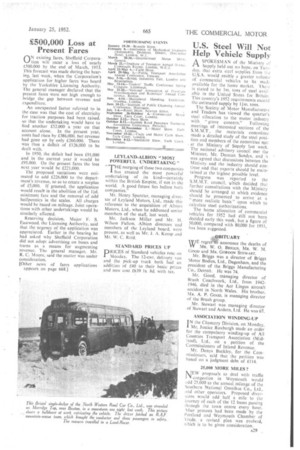£500,000 Loss at Present Fares
Page 31

If you've noticed an error in this article please click here to report it so we can fix it.
ON existing fares, Sheffield Corporation will tncur a loss of nearly £500,000 by the end of March, 1953. This forecast was made during the hearing, last week, when the Corporation's application for higher fares was heard by the Yorkshire Licensing Authority. The general manager declared that the present fares were not high enough to bridge the gap between revenue and expenditure.
An unexpected factor referred 10 in the case was that the cost of electricity for traction purposes had been raised, so that the undertaking would have to find another 152,000 a year on that account alone. In the present year, costs had risen by 1386,000, but revenue had gone up by only 4260,000. There was thus a deficit of £126,000 to be dealt with.
In 1950, the deficit had been .£91,000 and in the current year it would be £95,000. On the present fares the loss next year would be £221,000.
The proposed variations were estimated to add 4226,000 to the department's revenue, so as to create a surplus of £5,000. If granted, the application would result in the abolition of the lid. minimum fare and the removal of odd halfpennies in the scales. All charges would be based on mileage. Joint operations with other undertakings would be similarly affected.
Reserving decision, Major F. S. Eastwood, the Licensing Authority, said that the urgency of the application was appreciated. Earlier in the hearing he had asked why Sheffield Corporation did not adopt advertising on buses and trams as a means for augmenting revenue. The general manager, Mr. R. C. Moore, said the matter was under consideration.
[Other news of fares applications appears on page 668.]




















































































